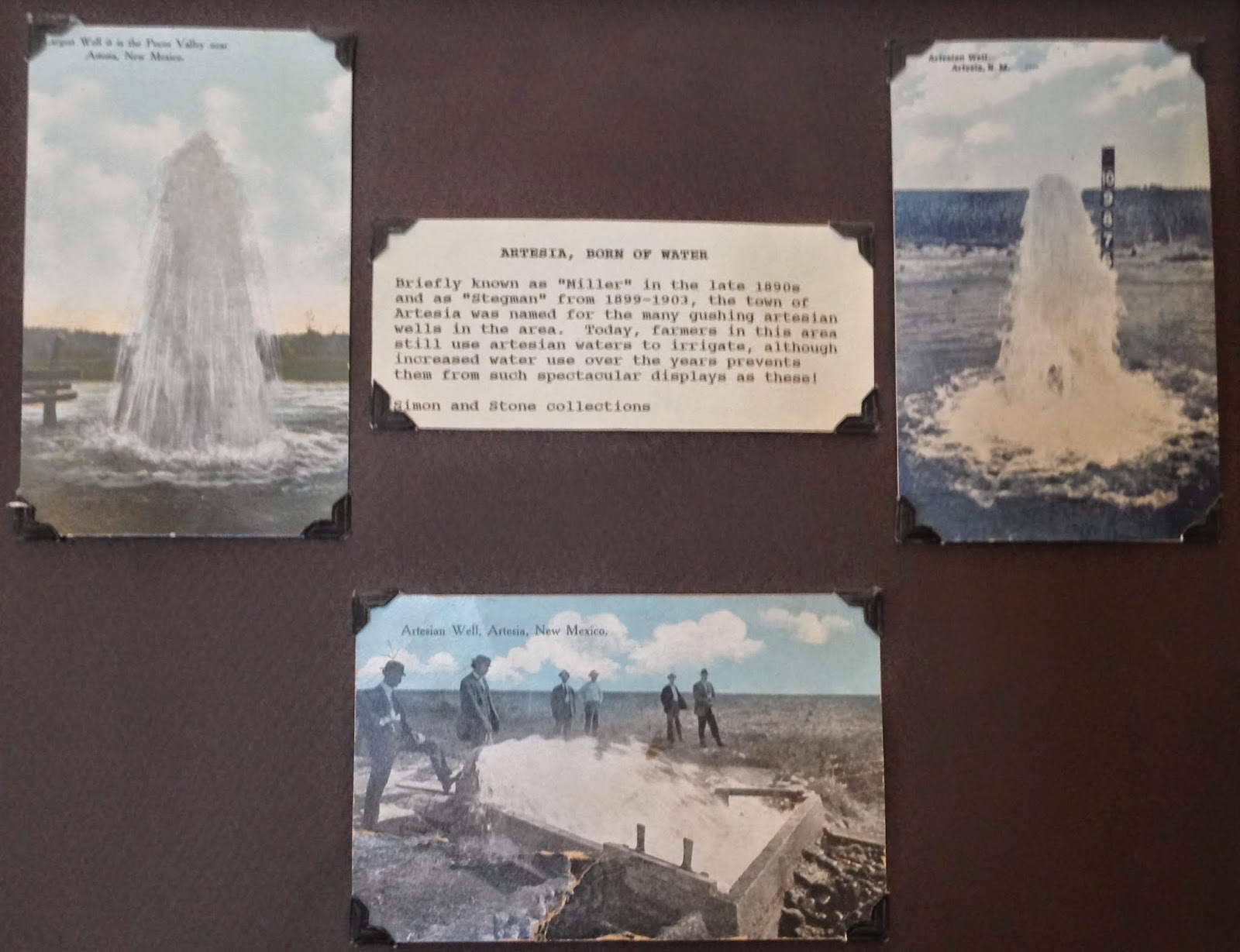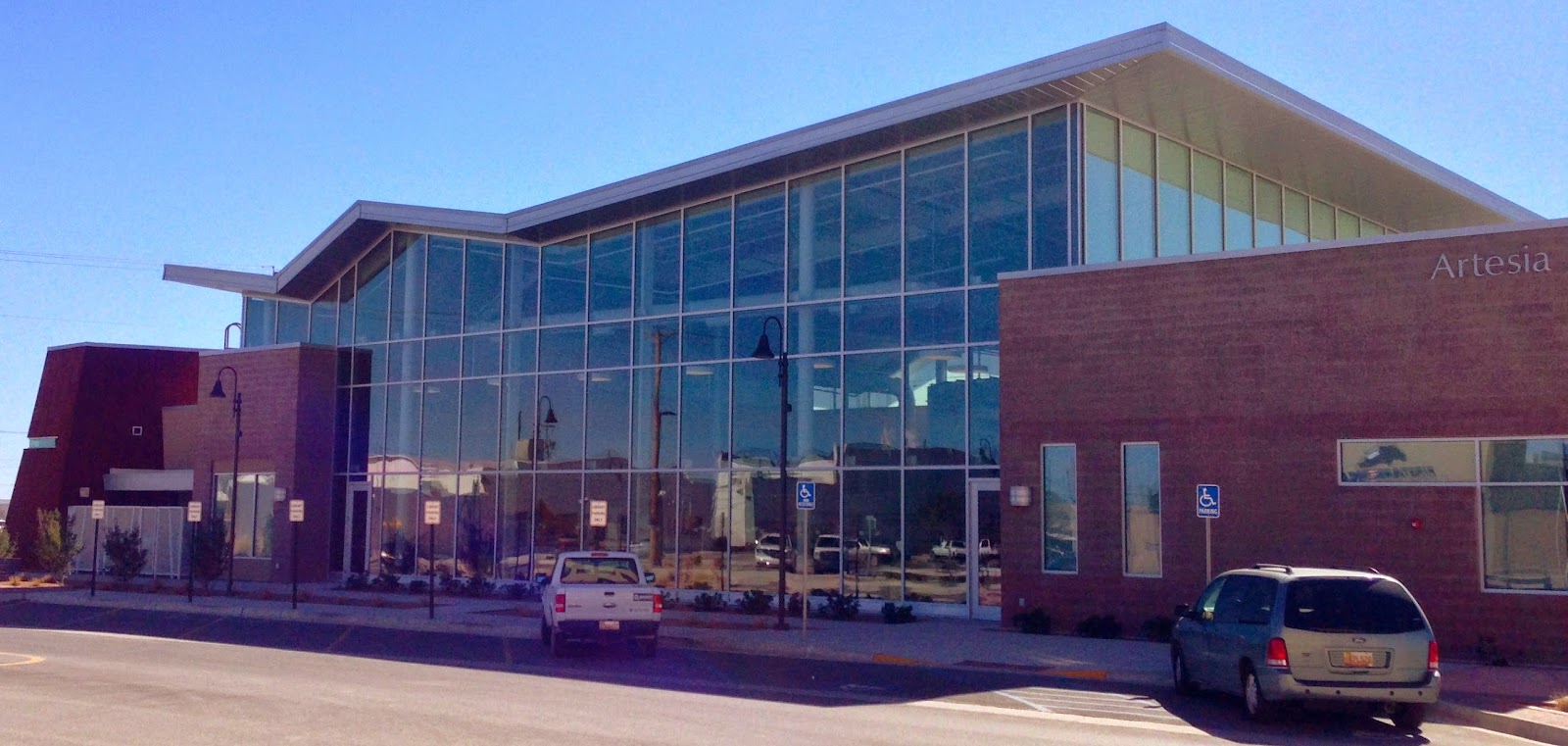Today, we explored Artesia, a twenty-five minute drive from our campsite.
The Man Who Fell to Earth starring David Bowie was filmed in the The Artesia Restaurant and Hotel.
The following photos are from our self-guided walking tour. The visitor's center is closed due to renovations. The chamber of commerce, next door, provided us with a walking tour guide, as well as some other tourist information.
Artesia's public library opened in 2013.
A 30 foot wall in the library displays Peter Hurd's mural from 1952. Using fresco al secco techniques, Hurd painted the mural on a lobby wall in a downtown Houston building owned by Prudential Insurance. When the building was slated for demolition by a subsequent owner, private benefactors arranged for professional restoration and transport of the mural to Artesia.
http://www.artesianews.com/?s=peter+hurd+mural
The following photos are from the Artesia Historical Museum:
The college closed in 1971.
"Under the artistic supervision of its owner, Sunny Dilts, the Adobe Rose Bed and Breakfast metamorphosed from a former art workspace built in the late 1960s into one of the most charming accommodations in southeastern New Mexico."http://www.adoberosebb.com/AboutUs.php
The children's section of the library:
On South Third and West Main Street:
 |
| "Life of Billy the Kid" |
The Ocotillo was constructed in 1935 as a 588-seat movie theater owned and operated by the local Bartlett family. Two stores were located in the front of the building: a jewelry store and a popcorn and confectionery dispensary. The theater was converted to a cafeteria in 1965, which closed in 2001. The building was purchased by the non-profit Artesia Arts Council, which undertook a full-scale renovation of the building for use as a performing arts center. The building’s original architectural design was in Pueblo Indian style, including eight murals of Indian and mountain scenes, which were not able to be preserved. Today’s building was designed by New Mexico architect Devendra Contractor, and includes the most modern amenities in theatre design. http://www.artesianews.com/artesia/walking-tour
324 West Main Street



The clock tower was donated to the City of Artesia by a local private businessman, Ralph Nix, in 2002. The chimes play dozens of tunes, including the local Bulldog fight song. The clock’s time is adjusted automatically several times throughout the day to ensure that the reading is always accurate. The clock features the year 1905, the date the City of Artesia was officially incorporated. Nix, in 2002. The e City of Artesia was officially incorporated.
The following photos are from our visit to the Artesia Historical Museum and Art Center:
different safety standards...
Now we have seen our history, as well as our parents' generation, featured in museums!
(*Kitsilano, B.C.)
"Abo Elementary School and Fallout Shelter" is now used for district storage. Twice a month, it’s also used by federal law enforcement officers for training purposes. Today was one of those days; we did not take photos.
U.S Army tent stake 1851 Fort Cummins, New Mexico







































































































Great post! Lots of fun interesting history. The little reading nook looked cozy.
ReplyDeleteThe creator of the bronze statues captured movement as if a film was stopped at a certain frame ! Beautiful to admire such work.
ReplyDelete